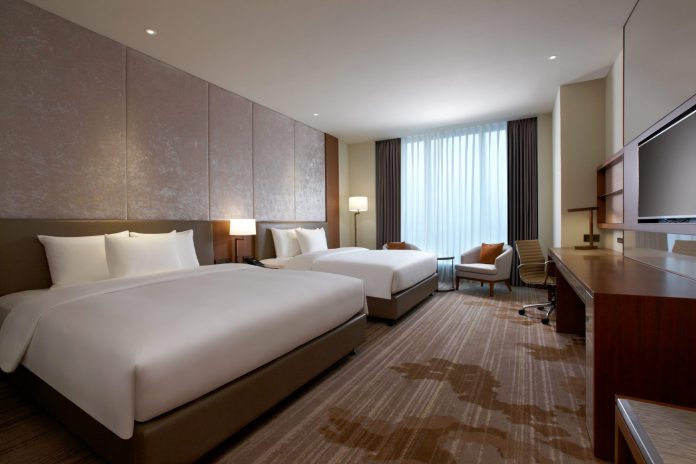The domestic hotel industry continues to grow at a slow pace despite the strong demand growth for rooms. According to an ICRA note, Pan-India average occupancy and Average Room Rate (ARR) in the industry witnessed a marginal improvement of one to two per cent (y-o-y) driving Revenue per Available Room (RevPAR) for Q1 FY2018 up by three per cent. The RevPAR has been growing on a y-o-y basis for the past 12 quarters. Despite the continued occupancy traction and the marginal improvement in ARRs, a healthier traction in ARR is necessary over the coming quarters to generate adequate returns, considering the significant capital investments undertaken by the industry.
Revenue growth for the industry sample remained subdued with the adjusted (for renovation/ sale of hotels) industry revenue witnessing two per cent Y-o-Y growth during the quarter. On an unadjusted basis, industry revenue declined by 2.3 per cent during the quarter (compared to a growth of 2.6 per cent in Q1 FY2017 and decline of 4.3 per cent in Q4 FY2017). Continuing the trend over the previous three quarters, Q1 FY2018 operating margins improved by 90 bps aided by cost controls; operating margins for Q1 FY2018 stood at 12.6 per cent (11.7 per cent in Q1 FY2017). As the industry pared some debt during FY2017, using proceeds from sale of assets, interest expenses have declined. However, at 63 per cent of OPBDITA in Q1 FY2018 (Q1 FY2017: 96 per cent), interest expense continues to eat into bulk of the operating profits and is a major concern.
Subrata Ray, Sr. Group Vice President, Corporate Sector ratings, ICRA said, “ICRA’s premium room inventory database across the country indicates 4.4 per cent compounded annual growth in supply during the period FY2017-FY2020; the expected growth is lower than the supply addition witnessed in the last six to seven years. With no large project announcements over the past year, muted supply pipeline is expected to be the backbone for the current up-cycle, even as demand continues to grow by about 12 per cent plus, led by slow recovery in the domestic economy, increasing Foreign Tourist Arrivals (FTA), and higher Meeting, Incentives, Conferences and Exhibition (MICE) activity.”
The Supreme Court, in December 2016, had banned sale of alcohol within 500 metres of highways with effect from April 01, 2017. In subsequent hearings, the apex court had first allowed city establishments to de-notify highways within the city limits as city roads, thus allowing sale of alcohol in hotels along these roads. Further clarification arrived on August 23, 2017, with the SC clarifying that the ban was not applicable to licensed establishments within the municipal areas. Depending on location, liquor sales accounted for 1.8 per cent to 11.8 per cent (average of six per cent) of revenues for premium hotels in ICRA’s sample. With this clarification, the industry is expected to post stronger revenue growth in the coming quarters.
Ray said, “Going by the recent trends in foreign tourist arrivals into the country and forex earnings growth, improving domestic macro-economic data (barring the transitory dip in economic activities due to demonetisation), and expected ease of business post implementation of GST (barring the initial hick ups post the roll out), ICRA expects five to six per cent growth in RevPARs during FY2018. RevPAR growth is estimated to accelerate to seven to eight per cent during FY2019 and FY2020, driven largely by anticipated traction in ARRs.”








